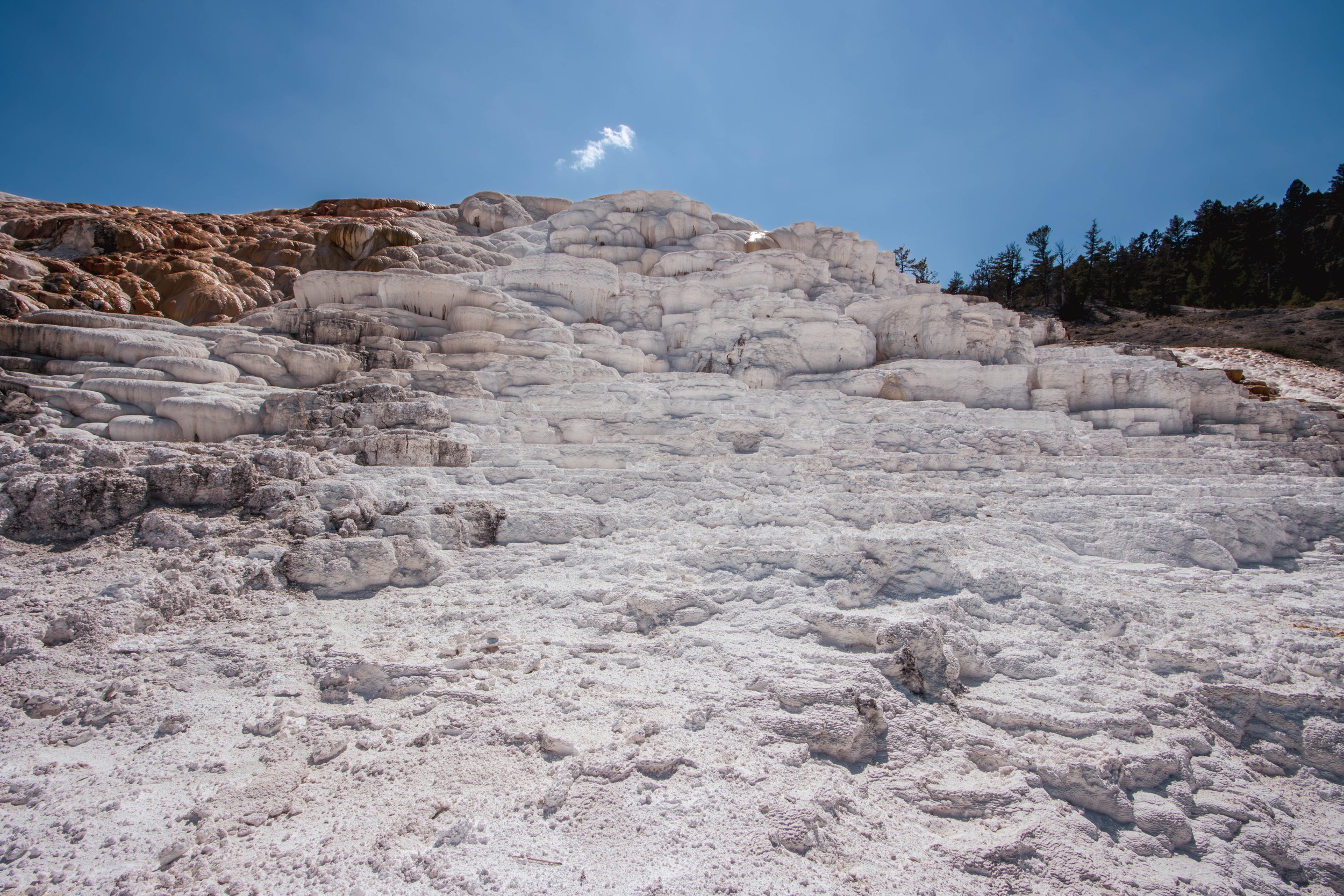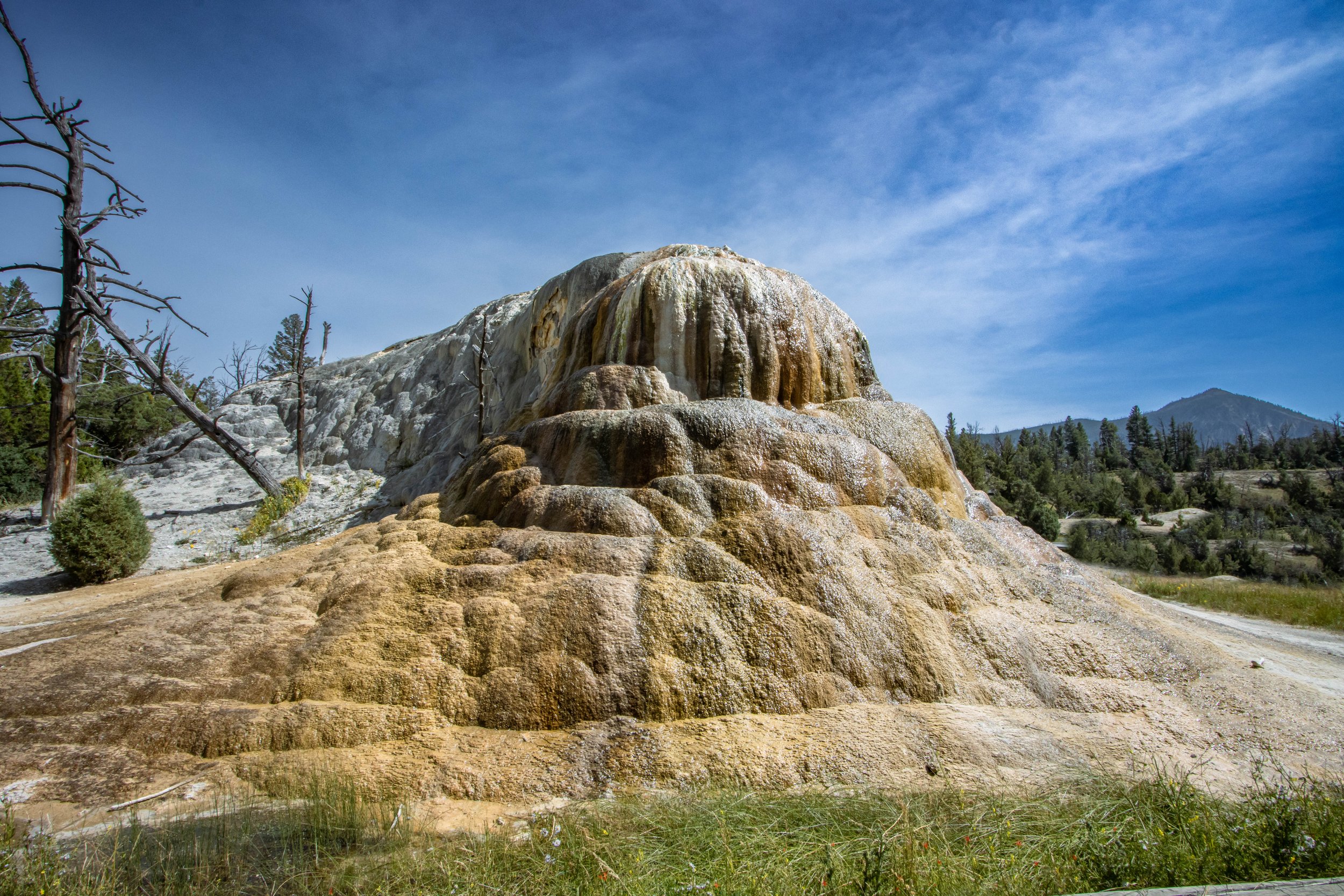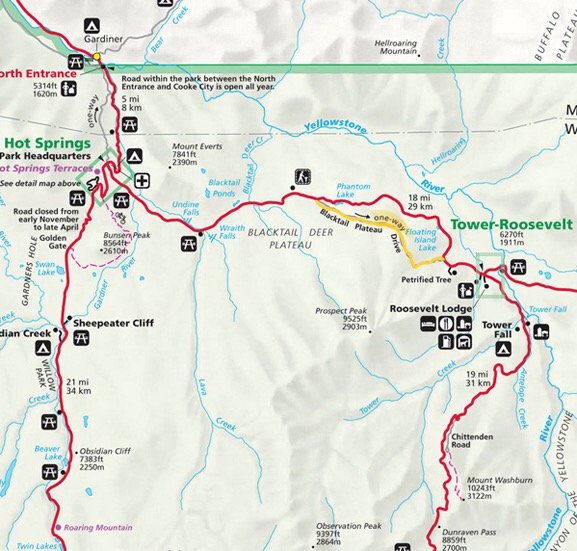Encountering the American Buffalo in Yellowstone
The first light of dawn crept through the mesh of our tent at Headwaters Campground, gently waking us for our second day in Yellowstone. There’s something uniquely exhilarating about rising early in a place as wild and magnificent as this. Despite the rustic setting, the campground felt almost like a glamping resort, providing us with the comforts we hadn’t expected. The Wi-Fi, reaching every corner of the grounds, kept us connected to the world—though we were more interested in disconnecting and immersing ourselves in nature. The visitor center offered a fully stocked store with everything from firewood to camp snacks, and even first aid supplies, which I appreciated after the thumb incident. Even a café that turned into a saloon by night and a full restaurant made it easy for visitors to fuel up, but my travel partners and I preferred our camp cookouts.
After a quick breakfast and some coffee to shake off the early morning chill, we packed up and headed out, entering the park through the south entrance. The plan was ambitious—we’d follow the park’s main road north, circle west, and then loop back south to our campsite. Yellowstone’s road system is brilliantly designed, forming a figure eight that makes it possible to visit the park in its entirety. We had only the day to cover as much ground as possible, so we set off with excitement and a sense of urgency.
Before officially re-entering the park, we pulled over to take our first photo in front of the Yellowstone National Park sign. I didn’t get the chance the day before and we wanted to ensure we didn’t miss this opportunity.
Just as the day before, the GuideAlong app filled the car with stories and history. It was like having a knowledgeable guide in our pocket, making the journey feel even more enriching. As we approached Lewis Lake, the app dove into its history, connecting the lake to the famous Lewis and Clark expedition. Named after Captain Meriwether Lewis, the lake is a small but serene body of water, surrounded by lush forest and often shrouded in mist. Though the expedition never actually passed through Yellowstone, the park is connected to how early explorers traversed through the untamed and mysterious land that once was—and still is, in many ways.
Our first stop of the day was the West Thumb Geyser Basin. Before stepping out to explore the thermal features, I couldn’t resist the lure of the visitor center’s bookstore. Yellowstone’s wildlife has always fascinated me, and I found myself torn between several books about the wolves of Yellowstone. When I asked the employee at the desk for a recommendation, he enthusiastically suggested The Alpha Female Wolf by Rick McIntyre. He spoke passionately about Yellowstone’s wolves and their incredible story of resilience, family bonds, and the intricate social structures that govern their packs. McIntyre, a retired ranger who spent years observing these wolves, wrote with a depth of knowledge and love for these animals, making the book irresistible. Yet, I hesitated, deciding to wait in hopes of finding something else. I kicked myself for that decision once we left, knowing I should have bought it then and there.
West Thumb itself is a geothermal wonderland, with its 18 geysers and springs nestled along the shores of Yellowstone Lake. Among these, Abyss Pool and Black Pool stood out. Abyss Pool, one of the park’s deepest hot springs, mesmerized us with its dark, seemingly bottomless depths. The water is so clear, you can see far down into the earth, and the blue color is so intense it feels almost otherworldly. Black Pool, despite its name, is now a brilliant turquoise, a transformation that occurred as the water temperatures rose, killing the bacteria that once made it dark. Standing at the edge of these pools, with the vastness of Yellowstone Lake as a backdrop, was a moment of awe.
After leaving West Thumb, we continued our journey north, making a quick pitstop at the Yellowstone River. Although brief, this stop turned out to be one of those unexpected moments that make a trip truly special. A flock of small birds, which at first glance looked like ducks, caught my eye as they played in the river’s rapids. They seemed to be having the time of their lives, diving in and out of the water from the rocks, their energy infectious. With my 100-400mm telephoto lens, I was able to capture a close-up of one of the birds as it paused to rest, its feathers ruffled and glistening with water droplets. It was a small moment, but one that connected me to the joy and vibrancy of the natural world.
As we approached Hayden Valley, the GuideAlong app informed us that we were entering prime bison territory. Even with the heads-up, nothing could have prepared me for the sight of these magnificent creatures. There’s a powerful emotion that comes with seeing a bison for the first time—an animal so deeply woven into the fabric of American history and the spirit of the West. We pulled over and spent a good amount of time in the valley, watching the bison graze and wallow in the summer sun. My friends were gracious enough to give me the time I needed to capture the scene through my lens, while they sat back and enjoyed the spectacle. This moment was especially meaningful for me. I’ve long wanted to practice wildlife photography, and here I was, in one of the most iconic locations, with one of the most iconic animals. The bison, once nearly driven to extinction, now roam freely across Yellowstone, a testament to the complex conservation efforts of the National Park Service and locals. They are not just symbols of the wild; they hold deep cultural significance for many Native American tribes, who see them as sacred animals. The protection they receive today ensures that future generations will also have the chance to encounter these majestic creatures in the wild.
Continuing through Hayden Valley, we made a detour to explore Mud Volcano and Sulphur Caldron. The smell hit us before we even got out of the car—a pungent, rotten egg stench that made us second-guess our decision. But curiosity won out, and we braved the odor to see these unique geothermal features. Mud Volcano, with its bubbling, churning mud, looked like something out of a prehistoric landscape. The name is fitting, as the area was once a large, active mud geyser that eventually collapsed into the turbulent pool we see today. Just as we were about to leave, I noticed a bison grazing unbelievably close to us, drinking from the wet meadow near the Sulphur Caldron. I quickly grabbed my telephoto lens and captured the bison in incredible detail, marveling at how these animals can thrive in such harsh environments.



With much more ground to cover, we hit the road again, making sandwiches in the truck to save time as we drove towards Tower-Roosevelt. The road wound through some of the park’s most stunning landscapes, and we couldn’t resist stopping at Tower Falls. I had been looking forward to using my NiSi Optics filter for a long exposure shot of the waterfall, and the sight did not disappoint. The falls, cascading down in a graceful veil, were a stark contrast to the dry, drought-ridden waterfalls I had practiced on back in the Texas hill country. The waterfall plunges 132 feet into a deep, rugged canyon, framed by towering rock spires that give the falls their name. The rock formations around the falls are remnants of ancient lava flows, their jagged edges softened over time by the elements. These formations add a rugged charm to the scene, reminding you that Yellowstone is a land shaped by fire and ice, where the forces of nature are still very much at work. For photographers, Tower Falls offers a perfect opportunity to capture the essence of Yellowstone. The contrast between the smooth, flowing water and the rough, textured rocks creates a dynamic composition. Using a long exposure technique with a filter, you can blur the motion of the water, transforming it into a silky ribbon cascading down the canyon, while the surrounding landscape remains sharp and detailed.
Tower Fall, Yellowstone National Park 2023.
As the day began to wane, we made one final significant stop at Mammoth Hot Springs. The approach to the springs was breathtaking, the terraces rising like frozen waterfalls, with steam wafting off their surfaces. We began at the primary feature within the Lower Terrace, known as the Minerva Terraces, its intricate formations of travertine gleaming in the afternoon light. The Main Terrace and Cleopatra Terrace followed, each with its unique palette of colors, shaped by the microorganisms living in the hot water. These terraces are living sculptures, constantly evolving as the water flows over them, depositing layers of minerals. Depending on its cycle of activity, the potent water can flow over the boardwalk, but we were fortunate to have arrived just as the water settled below us.


On our way back down the trail, we stopped at Palette Spring, a smaller but equally beautiful formation. As I was capturing its delicate details, one of my friends tapped me on the shoulder, pointing to a young elk approaching the terrace. I cursed myself for not bringing my telephoto lens, but even with just my versatile 24-70mm and ultra-wide-angle lens, I was able to capture the elk in its natural habitat, a perfect complement to the landscape. As we made our way back to the car, we passed Liberty Cap, a towering stone formation that looked like it had been plucked from an ancient world. Formed by a now-extinct hot spring, Liberty Cap stands as a monument to the forces that shape Yellowstone’s landscape.






On our way out of Mammoth Hot Springs, we drove by the Orange Spring Mound one of Yellowstone’s lesser-known yet equally fascinating thermal features. The mound is formed by mineral deposits from hot water that rises from deep beneath the earth's surface. As the water reaches the surface, it cools and releases calcium carbonate, which over time has built up to create the large, dome-shaped mound. The vivid orange hue comes from thermophilic bacteria and algae that thrive in the hot, mineral-rich water, giving the mound its distinctive appearance. Orange Spring Mound continues to grow and change, albeit slowly, as mineral-rich water continues to flow over its surface, creating new layers of deposits. The shape and texture of the mound, with its rippled, almost coral-like formations, are unlike anything else in the park—I would not have learned so much about this less famous beauty without the help of the GuideAlong app.
Before leaving the area, we stopped at the visitor center, which also serves as the park headquarters. I came across another copy of The Alpha Female Wolf and made sure to purchase it this time. I also stamped my National Park Passport and picked up a couple of stickers to remember the day. If you have a goal to visit every National Park, I highly recommend picking up a National Park Passport and filling your small booklet with stamps to commemorate your visits. There are also Junior Park Ranger stamps for little ones!
As we headed back to camp, we couldn’t resist taking a detour down the Blacktail Plateau Drive. It came as strong advice from our GuideAlong app—though it added 20-30 minutes to our route, we were submersed in the backcountry wilderness of Wyoming. The one-way dirt road weaves through the woods and meadows and is typically full of elk, bison, and bears; however, we didn’t notice any wildlife throughout the curves and bends of the slower-paced road. It didn’t matter, we were content with this special experience of solitude within Yellowstone.
After six miles of the winding dirt road, we descended toward Tower Junction and the Grand Loop Road where we came across the park’s only petrified tree. With just enough light left, we admired the ancient relic that turned to stone around 50 million years ago through mineralization. During intense volcanic activity, the area was buried under layers of ash rich in silica that gradually seeped into the fallen trees. Over time, the trees were preserved as stone, creating the Petrified Tree we see today. Unlike most fossils, which are typically impressions or remains preserved in rock, petrified wood is a three-dimensional, mineralized replica of the original tree. The details of the tree's bark and wood grain are remarkably well-preserved— I imagined what the forest might have looked like in its prime. This particular petrified tree is a redwood, similar to the towering giants found today in California. It's a must-see for anyone interested in geology, paleontology, or simply the wonders of the natural world.
The rest of the drive back to Headwaters Campground was peaceful, the sky darkening as we reflected on another day of adventure. We were tired, but it was the kind of tiredness that comes from a day well spent. As we pulled into the campground, thoughts of our next destination—Grand Teton National Park—filled our minds. Yellowstone had been everything we had hoped for and more, and the excitement of what lay ahead kept our spirits.
If you’d like to own any of these photographs, click or tap on the eligible images to go to my print shop.
Every purchase allows me to continue to do what I love as an exploring artist. Thank you!













